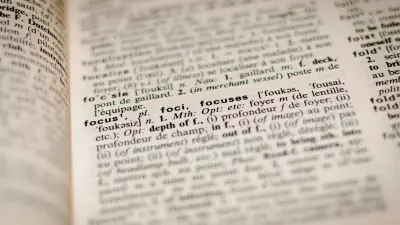"What does it mean?" This question might seem simple, but beneath it lies a profound layer of thought. We live among words, each carrying meaning—a silent bridge connecting human minds, cultures, and emotions. Yet, have we ever paused to truly consider the origins, transformations, and role of meaning itself? Within the diversity of Indonesian language, 'makna' is more than just a dictionary definition; it grows, changes, and often closely intertwines with history, tradition, and our worldview. Let us together trace slowly the footprints and stories behind the word 'makna'—a journey that crosses linguistic boundaries and reflects a mirror of our own culture.
From Root Word to the Heart of Language
The word 'makna' carries an intriguing etymological journey. It is borrowed from the Arabic term maʿnā (مَعْنَى), meaning 'meaning,' 'concept,' or 'the hidden substance behind a form.' In the formation of modern Indonesian, this word was adopted not merely as a direct equivalent of 'meaning' in English, but also carried spiritual and philosophical nuances deeply rooted in Islamic scholarly tradition and local culture. This distinguishes 'makna' from simply 'text,' since meaning always relates to context, intention, and interpretation.
'Makna' in Text and Everyday Life
If you've ever noticed, debates about 'makna' occur not only in linguistic seminars but also in everyday conversations. For instance, when discussing song lyrics, poetry, or even family dialogues—everyone may have their own interpretation and meaning. This elasticity and dynamism make 'makna' constantly evolve depending on cultural, historical, and personal experiences.
In Indonesian, makna is differentiated between lexical meaning (the basic meaning of a word) and grammatical meaning (the meaning shaped by a word’s relation within a sentence). Often, meaning extends to connotative, figurative, and social meanings. Hence, a simple word can evoke varying resonances depending on who utters it and who listens.
The Concept of Meaning and Cultural Identity
One of 'makna's' strengths is its ability to bridge identities, both individual and collective. Across many Indonesian cultures, proverbs, verses, or visual symbols are often loaded with layered meanings. Wayang, batik patterns, and even local cuisine are not just surface appearances; they carry stories and philosophies passed down through generations. 'Makna' functions as a tool for reinterpreting old values amid changing times.
Take, for example, the Parang Rusak batik from Java, which literally means 'broken line.' Yet, the hidden meaning behind this motif is much deeper: strength, resistance against arrogance, and wisdom in facing life’s challenges. Similarly, greetings like 'sampurasun' in Sunda or 'tabik' in Lampung—although simple to pronounce—carry meanings of respect, warmth, and social connection.
Open and Multicultural Meanings
Indonesia is a meeting point of various languages, cultures, and backgrounds. Word meanings can transform, negotiate, and even clash. The word 'makna' itself, for instance, can be understood differently among Minang, Javanese, Bugis, or Chinese-Indonesian communities. What one community finds meaningful may feel foreign or even contradictory to another. Here, cross-cultural empathy serves as a bridge to understand differing interpretations of meaning, strengthening community ties while preserving unique identities.
Tracing Changes in Meaning Through Time
Language is never static; it constantly moves. Meanings evolve over time: for example, the word 'baper' used to be interpreted literally as 'carrying feelings,' but now it is popularly used to describe an overly emotional attitude. Similarly, 'curhat'—originally a private 'pouring out of the heart'—has become public consumption on social media. These shifts in meaning reflect socio-cultural developments and the resilience of Indonesian language in accommodating new realities without losing its local roots.
A reflective question arises: How often do we notice the changes in meaning around us? Are we sensitive enough to these shifts, or do we simply accept them at face value?
Meaning as a Bridge of Communication and Self-Reflection
Ultimately, 'makna' is the essence of communication and also self-reflection. It forms relationships—between speaker and listener, writer and reader, even between individuals and their inner world. Through meaning, we can understand not only what is being said but also why something is said. Perhaps here lies the beauty and uniqueness of Indonesian language: it preserves a vast space for layered interpretations without limiting itself to a single definition.
For us, cultivating sensitivity to meaning is not merely a linguistic skill but a part of understanding fellow humans, history, and future potential.
Conclusion
Lorem ipsum dolor sit amet, consectetur adipiscing elit, sed do eiusmod tempor incididunt ut labore et dolore magna aliqua. Ut enim ad minim veniam, quis nostrud exercitation ullamco laboris nisi ut aliquip ex ea commodo consequat. Duis aute irure dolor in reprehenderit in voluptate velit esse cillum dolore eu fugiat nulla pariatur. Excepteur sint occaecat cupidatat non proident, sunt in culpa qui officia deserunt mollit anim id est laborum.
Closing
Thank you for taking the time to explore the story behind 'makna.' If you have stories, interpretations, or experiences related to this or other words you wish to share, we warmly welcome your contributions. Let’s support cross-cultural conversations and nurture sensitivity together—because in the end, meaning is about the journey, not merely the destination.







